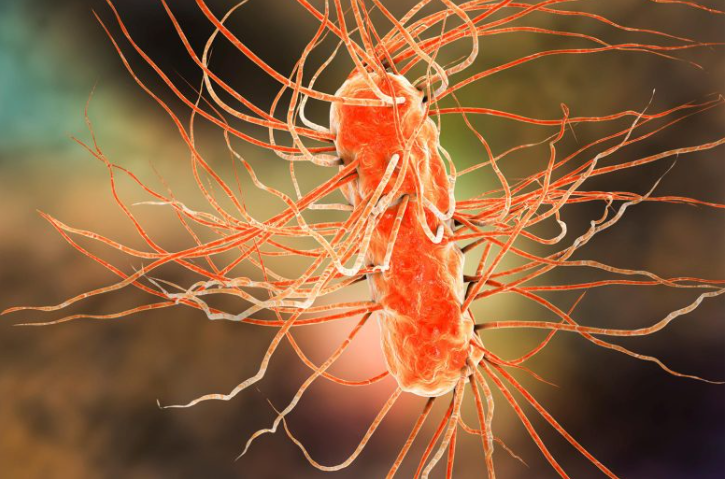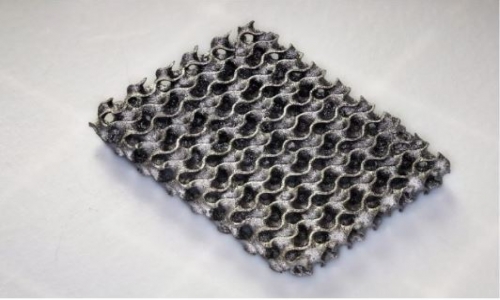


 9:57:32
9:57:32  2025-03-12
2025-03-12  797
797

Microplastics don’t just carry bacteria — they actively help them develop drug resistance. Researchers found that within days of exposure, E. coli became resistant to multiple antibiotics, even in the absence of antibiotic pressure.
Microplastics are more than just pollutants—they are complex materials that can drive antimicrobial resistance (AMR), even in the absence of antibiotics, according to a new study. The findings, published today (March 11) in Applied and Environmental Microbiology, highlight a growing public health concern.
“Addressing plastic pollution isn’t just an environmental issue—it’s a critical public health priority in the fight against drug-resistant infections,” said lead study author Neila Gross, a Ph.D. candidate in the lab of Professor Muhammad Zaman at Boston University.
As plastic use has increased globally, microplastic contamination has become widespread, with wastewater acting as a major reservoir. At the same time, antimicrobial resistance is on the rise, with environmental factors playing a key role. Microplastics are known to host bacterial communities on their surfaces, a phenomenon referred to as the “plastisphere.”
Experimenting with Plastic and Bacteria
In this study, researchers investigated how microplastics contribute to AMR at clinically relevant levels. They tested different plastic types—polystyrene (commonly found in packing peanuts), polyethylene (used in plastic zip-top bags), and polypropylene (found in crates, bottles, and jars).
The microplastics, ranging in size from 10 micrometers to half a millimeter (comparable to the size of a bacterium), were incubated with Escherichia coli for 10 days. Every two days, scientists measured the minimum inhibitory concentrations (MICs)—the antibiotic dose needed to stop bacterial growth—across four widely used antibiotics. This allowed them to track whether the bacteria were developing resistance over time.
Microplastics Accelerate Drug Resistance
The researchers found that microplastics, regardless of the tested size and concentration, facilitated multidrug resistance in 4 tested antibiotics (ampicillin, ciprofloxacin, doxycycline and streptomycin) in E. coli within 5-10 days of exposure.
The researchers demonstrated that microplastics alone can facilitate increased AMR development. “This means that microplastics substantially increase the risk of antibiotics becoming ineffective for a variety of high impact infections,” Gross said. Prior research primarily focused on antibiotic-driven resistance, without considering the role of environmental pollutants like microplastics. Studies with microplastics looked mostly at resistance factors such as antibiotic-resistant genes (ARGs) and biofilms, not the rate or magnitude of AMR via their minimum inhibitory concentration to different antibiotics.
Resistance That Lingers
The researchers found that resistance induced by microplastics and antibiotics was often significant, measurable and stable, even after antibiotics and microplastics were removed from the bacteria. Ultimately, this means that microplastic exposure may select for genotypic or phenotypic traits that maintain antimicrobial resistance, independent of antibiotic pressure.
Microplastics as Hotspots for Resistance Evolution
“Our findings reveal that microplastics actively drive antimicrobial resistance development in E. coli, even in the absence of antibiotics, with resistance persisting beyond antibiotic and microplastic exposure,” Gross said. “This challenges the notion that microplastics are merely passive carriers of resistant bacteria and highlights their role as active hotspots for antimicrobial resistance evolution.”
Given that polystyrene microplastics facilitated the highest levels of resistance, and that biofilm formation—known to enhance bacterial survival and drug resistance—was a key mechanism, the results underscore the urgent need to address microplastics pollution in antimicrobial resistance mitigation efforts.
Reality Of Islam |
|

"It is

The process

Astronomers

Cosmologist
 9:3:43
9:3:43
 2018-11-05
2018-11-05
10 benefits of Marriage in Islam
 7:5:22
7:5:22
 2019-04-08
2019-04-08
benefits of reciting surat yunus, hud &
 9:45:7
9:45:7
 2018-12-24
2018-12-24
advantages & disadvantages of divorce
 11:35:12
11:35:12
 2018-06-10
2018-06-10
 6:0:51
6:0:51
 2018-10-16
2018-10-16
 10:35:40
10:35:40
 2022-05-26
2022-05-26
 5:57:34
5:57:34
 2023-03-18
2023-03-18
 12:10:56
12:10:56
 2022-11-17
2022-11-17
 6:14:17
6:14:17
 2018-06-21
2018-06-21
 10:43:56
10:43:56
 2022-06-22
2022-06-22
 4:26:43
4:26:43
 2022-02-21
2022-02-21
 11:34:48
11:34:48
 2022-06-29
2022-06-29
 5:41:46
5:41:46
 2023-03-18
2023-03-18
| LATEST |